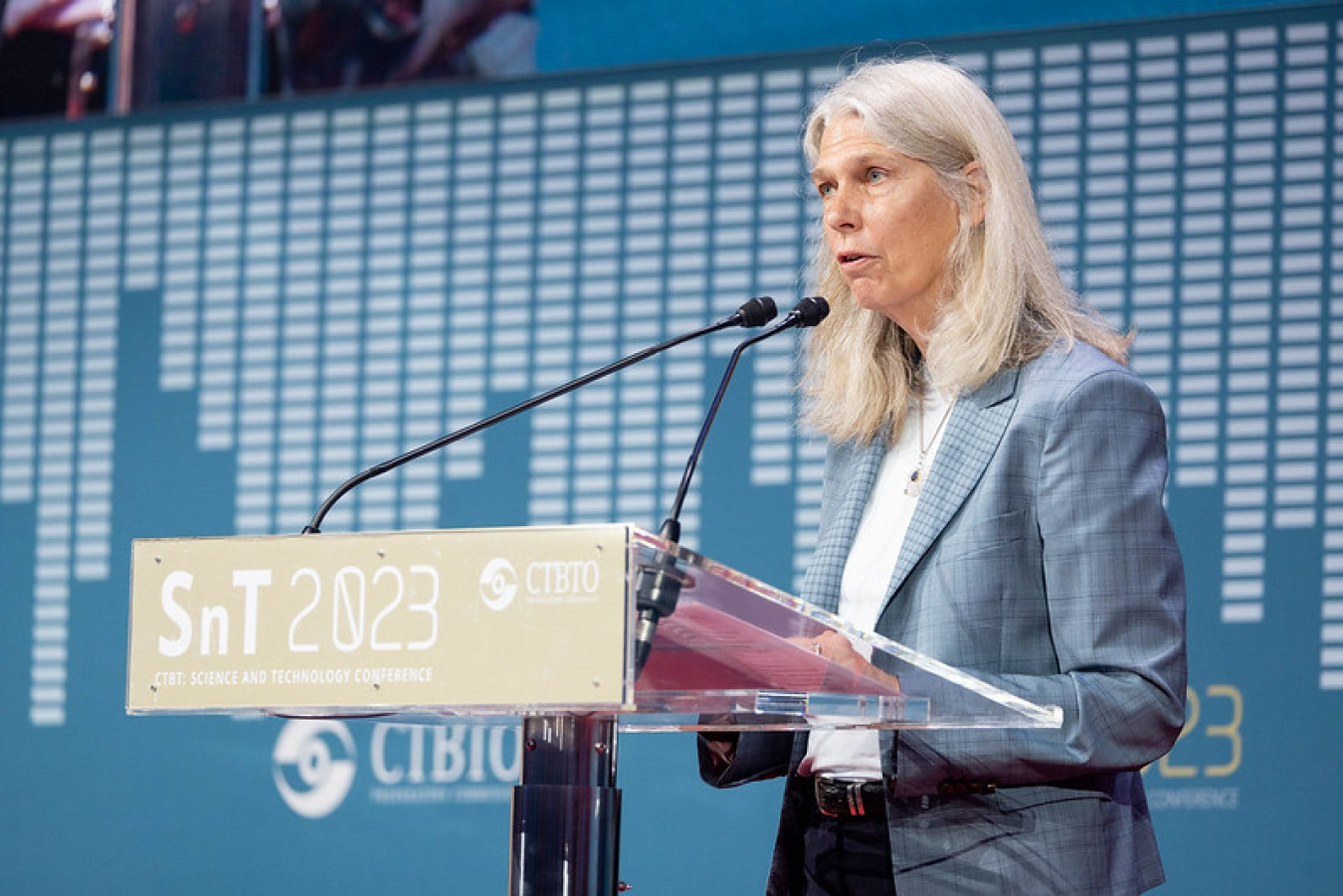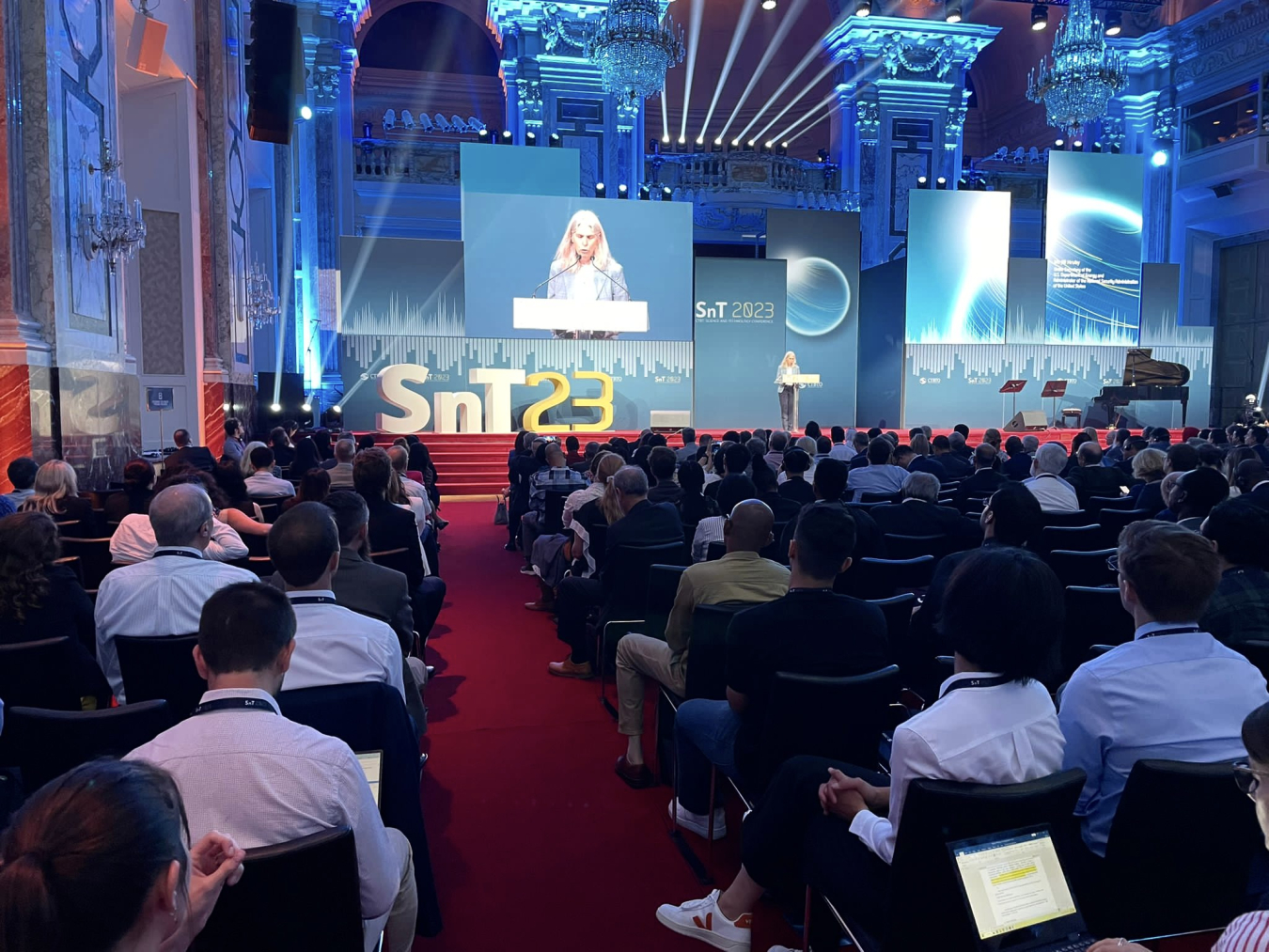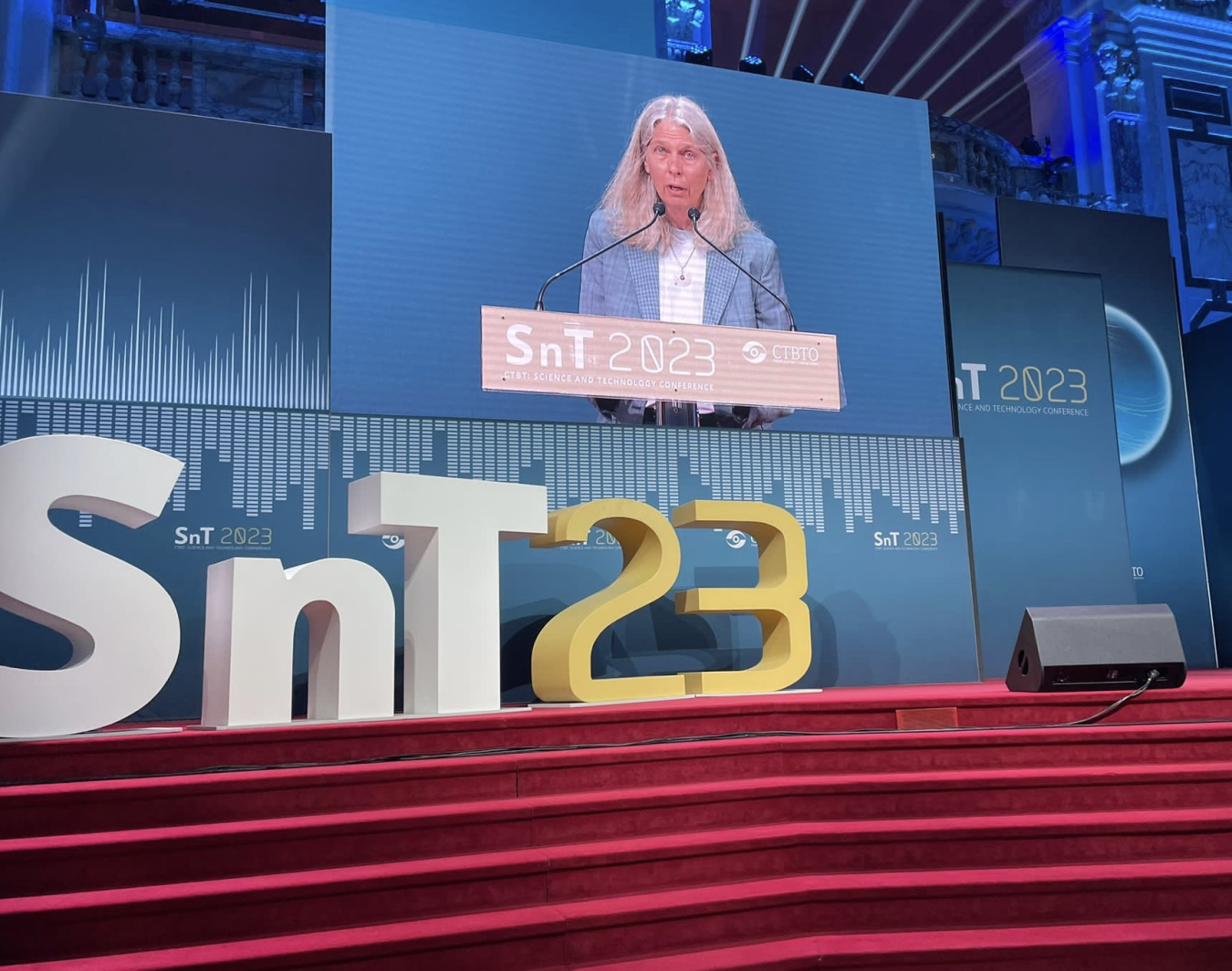Remarks by NNSA Administrator Jill Hruby at the Comprehensive Nuclear Test Ban Treaty: Science and Technology Conference 2023 (SNT2023)
National Nuclear Security Administration
June 19, 2023
The CTBT: More Important Now Than Ever
Hello everyone, it’s a pleasure and honor to be here today as the United States Under Secretary for Nuclear Security in the Department of Energy and the Administrator of the National Nuclear Security Administration. The National Nuclear Security Administration responsibilities include the design, production, and maintenance of the nuclear arsenal for the United States, and the advancement of nonproliferation and arms control.
I am here today to express the strong and enduring commitment by the United States to the Comprehensive Nuclear Test Ban Treaty.
I hope to illustrate our commitment by outlining the nuclear principles and obligations of the United States and discussing how the National Nuclear Security Administration uses science-based stockpile stewardship to meet our obligations, including conducting subcritical nuclear experiments. To conclude my remarks, I will put forward some ideas on advancing transparency.
U.S. Nuclear Principles and Obligations
The United States has a simple overarching principle about our nuclear arsenal: as long as nuclear weapons exist, the United States will maintain a safe, secure, and effective nuclear stockpile for our security and that of our allies and partners. We have formalized processes for assessments and policy reviews.
Relevant to today’s meeting, the Biden Administration’s 2022 Nuclear Posture Review states, “Consistent with the goals of the CTBT, the United States continues to observe a moratorium on nuclear explosive testing and calls on all states possessing nuclear weapons to declare or maintain such a moratorium.” With the current international environment that includes countries making advancements in their nuclear arsenals, and some threatening to use or test nuclear weapons, the CTBT and the associated monitoring and verification regime are more important than ever. The United States applauds Dr. Floyd’s tireless and successful efforts to get seven additional countries to ratify the CTBT, and I understand others are in progress.
Nonetheless, there remain both political and technical concerns that pose barriers to the U.S. ratification of the CTBT. Additionally, in our government that relies on checks and balances, the National Nuclear Security Administration is required to retain a test readiness posture. There is a natural tension in the policy to observe the test moratorium, support the CTBTO PrepCom functions, and retain test readiness. As I hope you will see, we manage this tension with integrity.
Importantly, the United States has not conducted a nuclear explosive test since 1992, and the National Nuclear Security Administration has not been directed to prepare for a new test. In fact, for thirty years, the National Nuclear Security Administration has been allocated substantial and sustained funding to advance its science-based stockpile stewardship program that, along with regular flight and lab tests, serves as the basis to assess and maintain the safety, security, reliability, and effectiveness of the U.S. stockpile without nuclear explosive testing.
Stockpile Assessment and Science-Based Stockpile Stewardship
The science-based stockpile stewardship program was created because of legislation that was passed when President Clinton signed the CTBT in 1996. That legislation required an annual letter to the President reporting on the safety, reliability, performance, and military effectiveness of the stockpile, as well as whether nuclear explosive testing is necessary to resolve any issues identified.
Scientists and engineers in the NNSA nuclear security enterprise work daily to support the annual assessment, and once a year the results acquired by each of the three national security laboratories are presented to the laboratory director, who in turn writes a letter to the Secretary of Energy. A similar process is conducted by the Commander of U.S. Strategic Command producing a letter to the Secretary of Defense. The Secretaries of Energy and Defense then write a letter to the President that reports on the stockpile and whether there is a technical or military need to test. The other four detailed letters are attached without edits. As Director of Sandia National Laboratories, I wrote two Annual Assessment letters and I can say that it is a rigorous process and a sobering responsibility.
The technical evidence includes detailed simulations on high-performance computing platforms. The physical understanding to develop and validate the simulations is obtained from data collected in highly diagnosed experiments at above-ground science facilities such as the National Ignition Facility at Lawrence Livermore National Laboratory or the Dual Axis Radiography Hydrodynamic Test Facility at Los Alamos National Laboratory. Other experiments are conducted underground at the former Nevada Test Site, now called the Nevada National Security Site or NNSS. Some of these experiments contain nuclear materials, but none create a supercritical nuclear chain reaction. These experiments are all consistent with the CTBT limitations.
Furthermore, all key nuclear components for current and planned systems in the U.S. stockpile are based on previously tested designs. Additionally, the United States has significantly reduced the quantity and types of nuclear weapons in our arsenal since the last nuclear test in 1992. For all these reasons, we have been able to maintain the safety and performance of our stockpile without further nuclear explosive testing.


The Nevada National Security Site
I would like to go into a bit more detail on our experiments at the Nevada National Security Site.
Currently, the NNSA is building two new subcritical experimental testbeds at the U1a Complex in Nevada. The testbeds will provide data to help address stockpile questions, with a special focus on the impact of plutonium aging on weapon performance. Since halting underground nuclear explosive testing, the United States has executed 33 subcritical experiments. The United States is preparing to execute two subcritical experiments in 2024 and plans to conduct approximately three subcritical experiments per year by the end of the decade.
The Nevada National Security Site is also being used for nonproliferation research. For example, when experiments are conducted within the U1a Complex or the Big Explosives Experimental Facility, a high explosives research facility also located at the Nevada National Security Site, monitoring is done to improve our understanding of subcritical experiment signatures. Nonproliferation research to improve low yield nuclear monitoring is also conducted at NNSS using chemical high explosives.
Using the U1a underground complex to conduct subcritical experiments and using other capabilities at NNSS for science-based stockpile stewardship and nonproliferation is the method used by the United States to maintain test readiness. This approach provides experience to people to work underground and maintains infrastructure and expertise in diagnostics at NNSS. Their work advances our scientific goals in both our weapon and nonproliferation programs. Through these activities, we can continue to be a responsible nuclear weapon state.
Advancing Transparency
Beyond our commitment to conduct only subcritical experiments, the United States is also committed to transparency. We have maintained a commitment to transparency in our stockpile stewardship and subcritical experiment programs for decades. We were pleased to host Dr. Floyd and his colleagues at our NNSA headquarters in Washington, D.C. in September 2021, at Pacific Northwest Laboratory in October 2022, and at Los Alamos National Laboratory, Sandia National Laboratories, and the Nevada National Security Site this April.
We are also exploring ideas to provide further transparency into our program. These ideas are meant for bilateral or multilateral cooperation, and we are eager to work with those who share our goal of greater transparency. We are open to hosting international observers for monitoring and verification research and development on our subcritical experiments. We have hosted international observers for past underground chemical high explosive tests and intend to extend invitations for future experiments. Event notifications of our chemical high explosive tests are sent to regional seismic networks as well as to the CTBTO PrepCom through the U.S. Mission in Vienna. Public sharing of the data gathered from high-explosive events occurs, and we will continue to publish and present geophysical experiment findings in peer-reviewed journals and conference proceedings, including source-term and collection information.
We are also open to working with others to develop a regime that would allow reciprocal observation with radiation detection equipment at each other’s subcritical experiments to allow confirmation that the experiment was consistent with the CTBT. We have several well-considered technical ideas on how this could be effective.
Additionally, I look forward to your ideas on further transparency. NNSA is exploring the possibility of live-streaming or otherwise releasing video of our subcritical experiments. Our intent in the long term is to create an environment at the Nevada National Security Site that allows for the possibility of observers to attend from a control room or other vantage point to support chain-of-custody for detection equipment and to witness subcritical experiments consistent with the CTBT.
I sincerely look forward to future engagement with Russia and China on participation in bi-or tri-lateral verification confidence building measures and other technological interactions to support future arms control and nonproliferation agreements.
If you would like to know more, I encourage you to attend NNSA’s Deputy Administrator for Defense Nuclear Nonproliferation, Corey Hinderstein, as she speaks about “Examples of U.S. Transparency and Verification Supporting Nuclear Nonproliferation” tomorrow at 3 pm.
To conclude, I want to emphasize again that the United States fully observes the CTBT and is committed to work to achieve its entry into force, recognizing the significant challenges that lie ahead in reaching this goal. We have not conducted a nuclear explosive test since 1992 and have no plans to do so. The United States is also committed to annual stockpile assessments, science-based stewardship, and test readiness. We will achieve our objectives in part by conducting subcritical experiments at the former test site complemented by focused experiments and detailed simulations executed elsewhere in the U.S. nuclear security enterprise. And today we put forward ideas on how to advance transparency with the hope we can work with others that support the CTBT.
Thank you for your attention and for your contributions.

